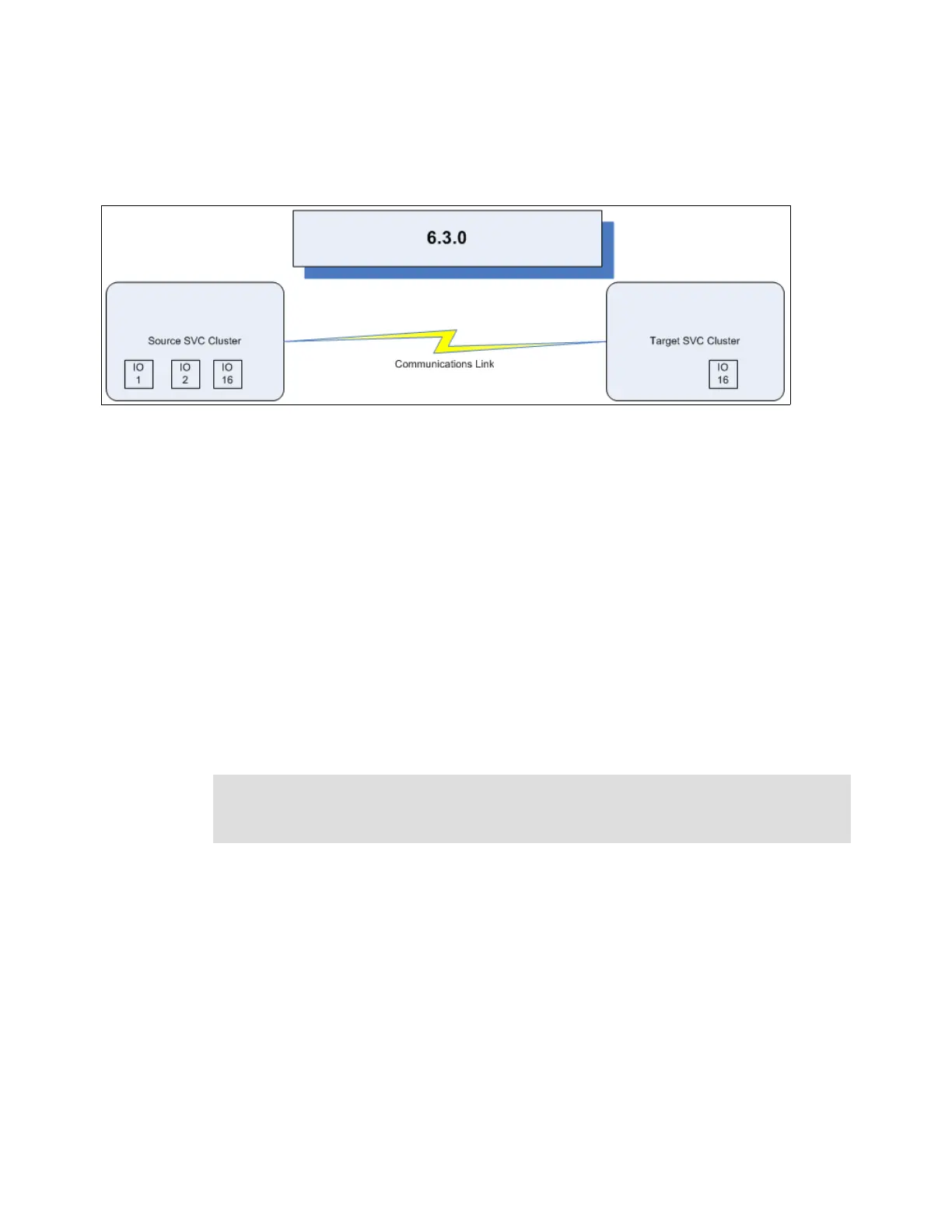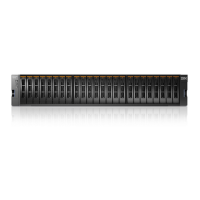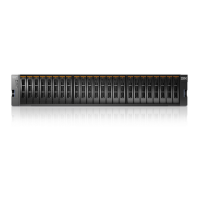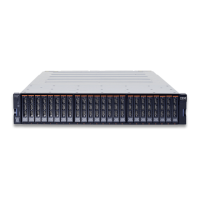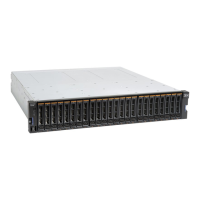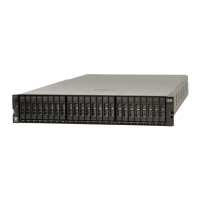574 Implementing the IBM Storwize V5000 Gen2 with IBM Spectrum Virtualize V8.1
In Figure 10-86 on page 573, you can see several I/Os on the source and the same number
on the target, and in the same order. Assuming that this data is the same set of data being
updated repeatedly, this approach results in wasted network traffic. The I/O can be completed
much more efficiently, as shown in Figure 10-87.
Figure 10-87 Global Mirror I/O with Change Volumes V6.3.0 and beyond
In Figure 10-87, the same data is being updated repeatedly. Therefore, Change Volumes
demonstrate significant I/O transmission savings by needing to send I/O number 16 only,
which was the last I/O before the cycling period.
You can adjust the cycling period by using the chrcrelationship -cycleperiodseconds
<60 - 86400> command from the CLI. If a copy does not complete in the cycle period, the
next cycle does not start until the prior cycle completes. For this reason, the use of Change
Volumes gives you the following possibilities for RPO:
If your replication completes in the cycling period, your RPO is twice the cycling period.
If your replication does not complete within the cycling period, RPO is twice the completion
time. The next cycling period starts immediately after the prior cycling period is finished.
Carefully consider your business requirements versus the performance of Global Mirror with
Change Volumes. Global Mirror with Change Volumes increases the intercluster traffic for
more frequent cycling periods. Therefore, selecting the shortest cycle periods possible is not
always the answer. In most cases, the default must meet requirements and perform well.
10.7.13 Distribution of work among nodes
For the best performance, MM/GM volumes must have their preferred nodes evenly
distributed among the nodes of the systems. Each volume within an I/O Group has a
preferred node property that can be used to balance the I/O load between nodes in that
group. MM/GM also uses this property to route I/O between systems.
If this preferred practice is not maintained, for example, source volumes are assigned to only
one node in the I/O group, you can change the preferred node for each volume to distribute
volumes evenly between the nodes. You can also change the preferred node for volumes that
are in a remote copy relationship without affecting the host I/O to a particular volume.
Important: When you create your Global Mirror volumes with Change Volumes, make sure
that you remember to select the Change Volume on the auxiliary (target) site. Failure to do
so leaves you exposed during a resynchronization operation.

